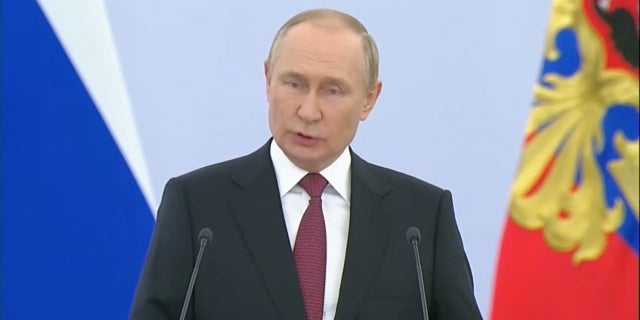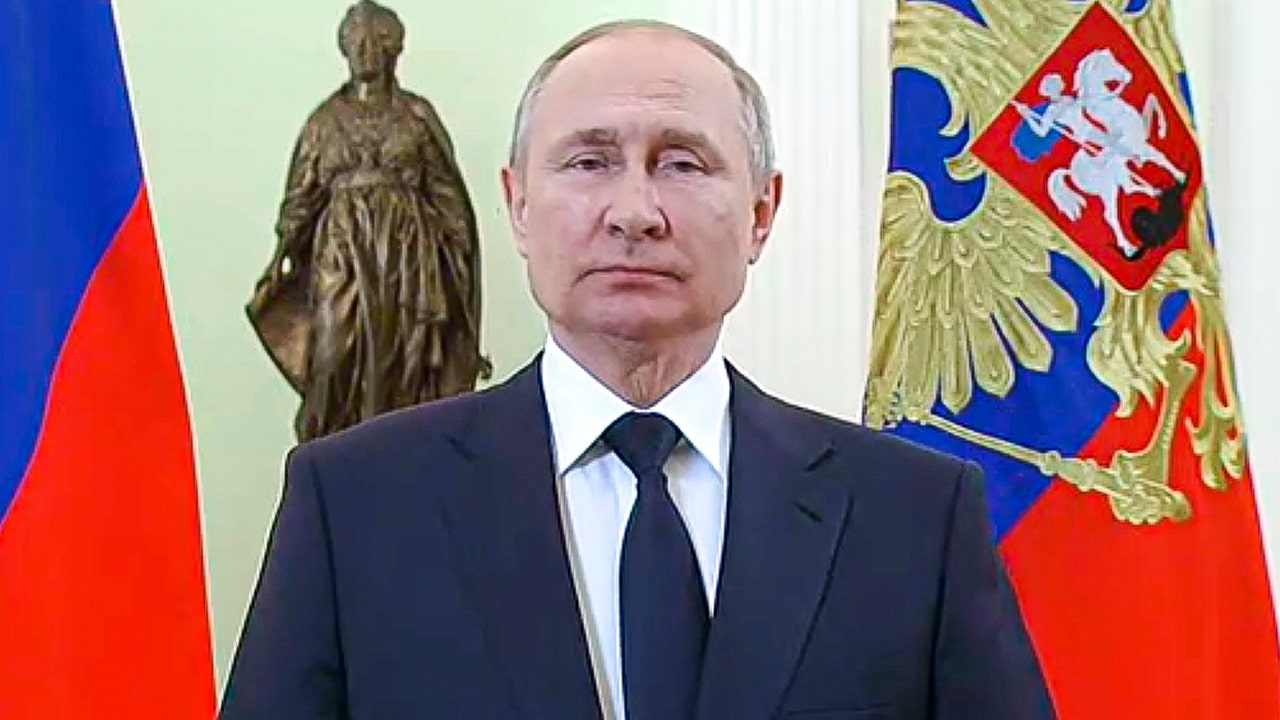Putin’s press secretary Dmitry Peskov dismissed Ukraine’s accusations Thursday that Russia was behind the Nord Stream pipeline gas leaks, calling it an act of state-sponsored “terrorism.” After NATO condemned it as a “deliberate, reckless” act of sabotage, Russia’s top intelligence chief Sergei Naryshkin said Moscow has evidence it’s the West that did it.
Here are five reasons why Russia is probably the state that has orchestrated this dangerous act.
First, Putin has the motivation. Facing potential defeat in Ukraine, Putin is desperate to reverse the momentum on the battlefield by resorting to dramatic escalation. This is his way of trying to compel the U.S. and Europe to stop providing long-range weaponry to Ukraine. The outcome of the conflict in Ukraine is an existential issue for him personally and for Russia. Russia views Ukraine, along with other former Soviet states, as part of its strategic security perimeter.
Putin has already declared adding Ukraine to NATO and integrating into the West a “red line.” Moscow views this as its version of the Monroe Doctrine.
NATO CONDEMNS ‘DELIBERATE, RECKLESS’ SABOTAGE OF NORD STREAM PIPELINES AFTER FOURTH LEAK DISCOVERED
The risk for Putin of having Ukraine join NATO outweighs that of being condemned by NATO as a sponsor of industrial terrorism. Frustrated that he is not taken seriously, Putin is desperate to send what he thinks is a clear message.

Danish Defense shows the gas leaking at Nord Stream 2 seen from the Danish F-16 interceptor on Bornholm, Denmark, Sept. 27, 2022.
(Danish Defense/Anadolu Agency via Getty Images)
Second, damaging or destroying critical infrastructure is consistent with Russia’s warfighting concept called Strategic Operation to Defeat Critical Infrastructure of the Adversary (SOPKVOP, in Russian). Russian strategists spent decades conceptualizing ways to bypass the U.S. and NATO conventional superiority in a conflict they had concluded was inevitable because Moscow and Washington have been in confrontation over control of the post-Soviet space since the collapse of the USSR in 1991.
NORD STREAM PIPELINE BLASTS WERE LIKELY FROM EXPLOSIONS, NOT EARTHQUAKES, SEISMOLOGIST SAYS
Intended for wartime, SOPKVOP operations also can be deployed during peacetime to “destabilize the opponent’s social and political situation” and dislodge the adversary psychologically to persuade him to abandon the fight. Russia’s targeting strategy prioritizes critical infrastructure. It has spent years studying Western vulnerabilities. SOPKVOP envisions prosecuting quasi-military campaigns by employing cyber operations and other non-kinetic methods.
Third, Russian military strategists have pondered a scenario in which Russia would target their adversaries’ civilian infrastructure during a conflict. Defeating a “small number of key interconnected targets” that are vital to the functioning of the state would cause the “entire system to collapse,” they hypothesized.
GLENN GREENWALD: NORD STREAM PIPELINE PROVIDES ‘ENORMOUS’ LEVERAGE TO RUSSIA
In 2012, Russian strategists analyzed a 2001 accident in the United States that involved a train that was transporting hazardous chemical materials and veered off the tracks in a Baltimore tunnel. The accident burst a water pipe, causing a three-foot flood that disrupted Baltimore’s mail carrier and telecommunications systems. Disruption of train and auto transportation followed along the entire Baltimore-to-New York corridor.
“Taking parts of the adversary’s civilian infrastructure out of commission,” the Russian strategists argued, will produce cascading destructive effects, “harming the economy, healthcare, defense and security of the entire state.”

Russian President Vladimir Putin delivers a speech as he formalizes the annexation of four Ukrainian territories, Friday, Sept. 30, 2022.
(REUTERS)
Fourth, Russia is one of very few countries that has the exact capability needed to sever the Nord Stream pipelines carrying Russian gas to Europe and to do it covertly. Moscow has invested in undersea warfare capabilities through its GUGI program, a top secret program with the innocuous cover name of “Deep Sea Research” that includes work on undersea communications and sensor networks, hydrocarbon exploitation, submarine rescue and investigating wreckage.
CLICK HERE TO GET THE OPINION NEWSLETTER
Moscow has war gamed territorial incursions in the Baltic Sea and the North Atlantic as well as the disruption of undersea cables that carry communications. It is the only country, according to the U.S. Naval Institute, that has a fleet of special mission submarines for seabed warfare and espionage and is expanding this capability, while U.S. and European antisubmarine warfare capabilities have atrophied since the end of the Cold War.
Fifth, Putin has no use for Nord Stream in the short term, as neither pipeline 1 or 2 are revenue producing. Moscow shut down Nord Stream 1 at the end of August, claiming that U.S. and European economic sanctions had made maintenance impossible. Nord Stream 2 never became operational, with Germany having declined its certification. To the contrary, taking Nord Stream out of commission serves Putin’s goal of freezing the Europeans in winter, a standard Putin move to use energy as a weapon.

Russia’s President Vladimir Putin, right, shakes hands with his China President Xi Jinping during a signing ceremony following the Russian-Chinese talks on the sidelines of the Eastern Economic Forum in Vladivostok Sept. 11, 2018.
(Sergei Chirikov )
CLICK HERE TO GET THE FOX NEWS APP
Russia is replacing this lost revenue with export earnings from non-Western countries, such as China, India, and even the Taliban. The $55 billion joint Russia-China pipeline “The Power of Siberia,” which has partially operated since 2019 and is scheduled to come online in 2025, is part of Putin’s long-term plan to pivot to Asia, given Moscow’s conclusion that relations with the U.S. are irreparable.
The Kremlin has the motive, the means and a warfighting doctrine that all put the sabotage of the Nord Stream pipeline directly at its feet.









